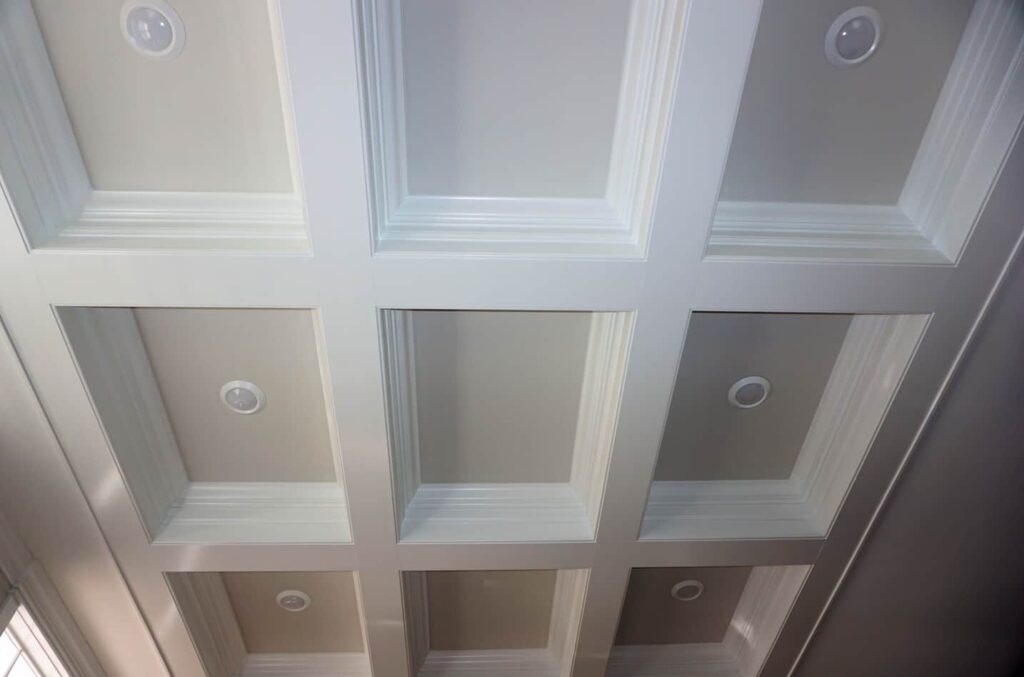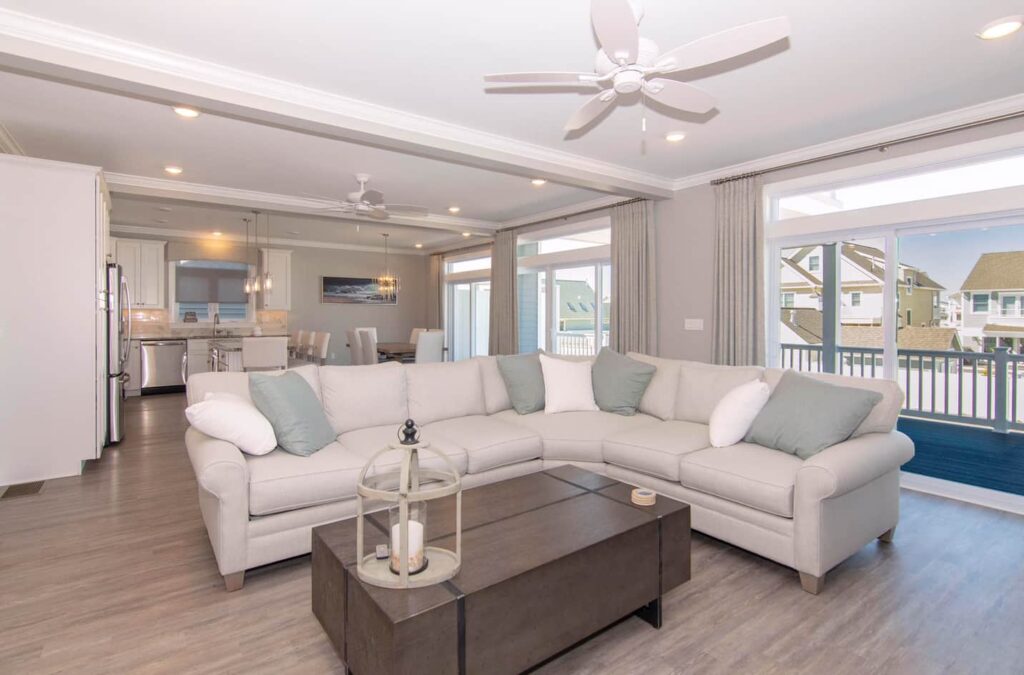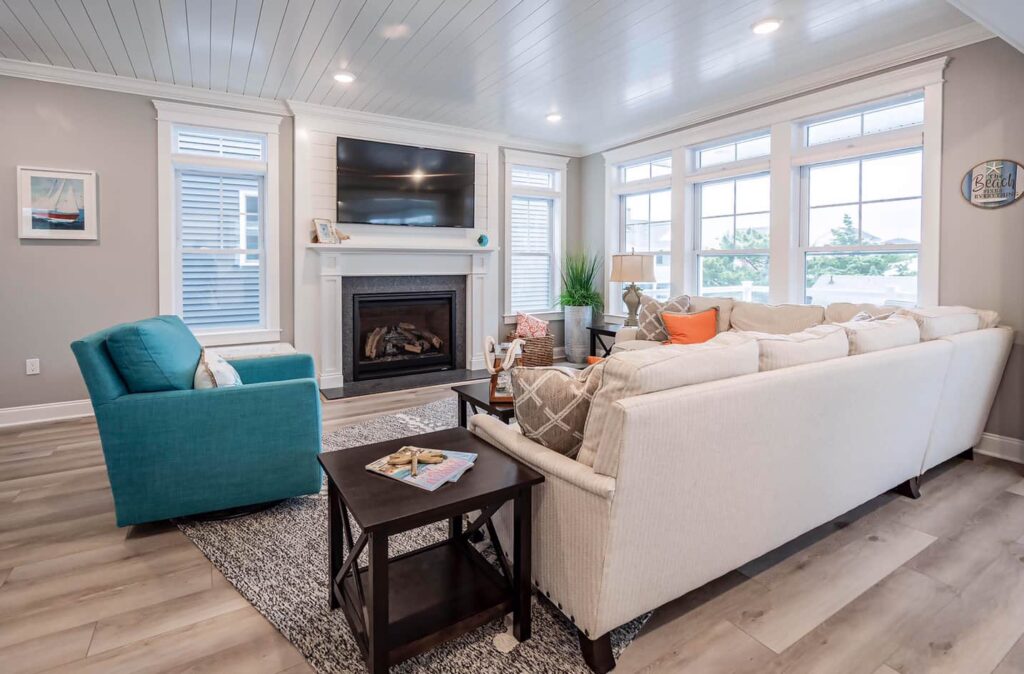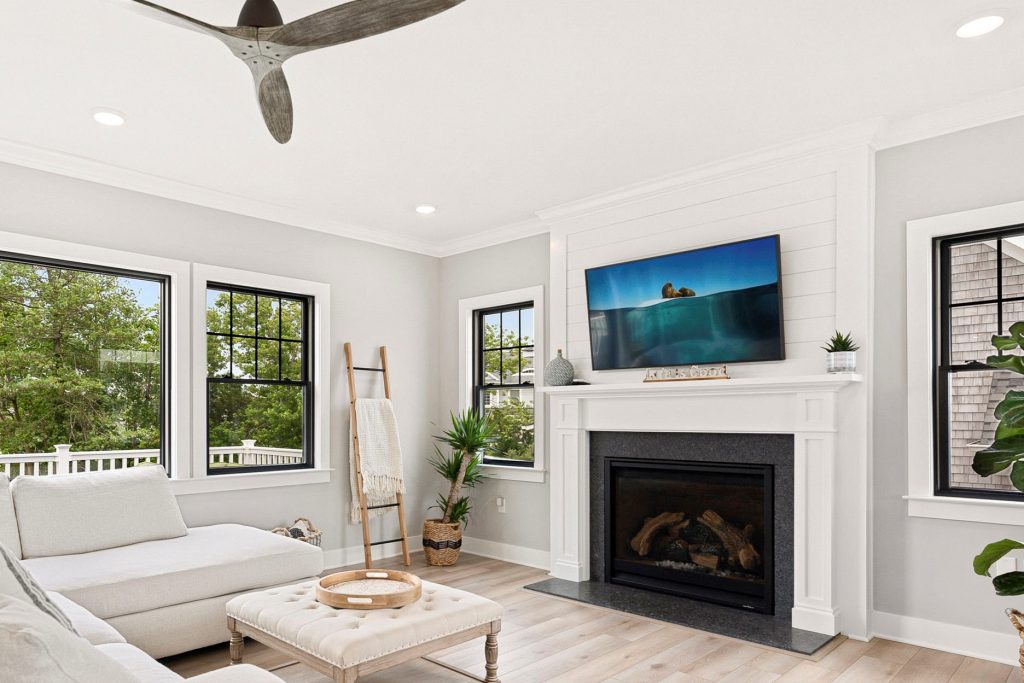They say the devil is in the details, but when it comes to your new home, I say the delight is in the details! It’s those little touches- like trim- that can unify a home, create drama, and show off your style.
Crown molding has been the preferred trim style for homes for decades-and it’s still quite popular. But there are other types of trim and moldings you can choose for your home.
Trim? Molding? Millwork? What’s the Difference?
Well, the answer is not much. Trim is a general term that refers to all of the moldings in a home (window casing, door casing, baseboards, etc.). Molding is a broad category of millwork (any woodwork produced in a mill) that adds non-structural ornamentation to a room. If you’re a fan of TV’s Home Town, you know that Ben and Erin prefer the term millwork. We at Dakan Homes typically call it trim. You can use any of these terms since they all basically mean the same thing.

How to Select Trim and Moldings
When choosing trim, it’s important to consider:
- The architectural style of your home (modern, farmhouse, colonial, craftsman, etc.)
- The location of the room – For example, does the room open into another space, like a kitchen that opens in the dining room or living room?
- Other structural elements in the room, like a fireplace, large windows, a vaulted ceiling, or built in bookcases.
- The size of the room – You want the trim to fit the scale of the room.
- Your décor – It all should complement each other.
- The durability of trim options – Does the trim need to stand up to lots of wear and tear?
- Your budget.
Regarding the last two points, trim can be made from several types of materials. Solid wood and MDF (medium-density fiberboard) are two of the most popular materials for trim.
MDF is more economical compared with solid wood. It’s made by a machine, so pieces come in uniform sizes and shapes, making installation easier. However, MDF is a bit softer and more prone to damage (nicking) than solid wood. Because of this, it requires more care than wood during installation. It’s also not recommended in high-moisture areas, like a bathroom.
On the other hand, solid wood trim is classic but comes with a much higher price tag. In some cases, it’s easier to install than MDF because it’s not as delicate. However, since wood is made by Mother Nature, it can come with imperfections, like knots, bulges, and warps. It also tends to split, whereas MDF doesn’t.
There’s no wrong choice. It really comes down to your budget, preference, and the specific room. And, you can mix and match trim materials throughout the house.

8 Types of Trim
There are many types of trim. Here are eight of the most popular.
- Crown and Stepped Molding. A classic trim style, crown molding- and its more modern brother stepped molding- is installed where the top of your wall meets the ceiling or above cabinetry. It’s an easy way to finish off a room. Crown molding can be simple or ornate, depending on your style. Standard crown molding styles include cove (a curved shape), ogee (an s-shape), and dentil molding (carved squares or rectangles). Stacked crown molding, where several pieces of trim are used together, is called stepped molding. Because stepped molding is longer, it adds height to the ceiling. And, highly decorative trim can draw the eye up, creating more visual height.
- Ceiling Trims and Trusses. Trim also can be applied directly to the ceiling. A coffered ceiling is a series of recessed panels (usually square) arranged on the ceiling and framed by beams. A tray ceiling features a higher, recessed section in the center that’s about a foot higher than the area around it. Think of an upside-down breakfast tray. Both styles are decorative, but they also can hide ductwork or support beams. Trusses are another way to create architectural interest in a room. Exposed trusses or ceiling beams can add rustic charm to a home and make a high ceiling seem less formal.
- Mantels. Fireplaces are typically showstoppers in a room. Add a dramatic mantel, and the effect can be stunning. Stepped molding, columns, panels, and shelving can be combined to create a unique mantel. And, you can think beyond just MDF or wood: mantels can be built using any combination of materials, including wood, stone, composite materials, tile, and glass.
- Baseboards. The opposite of crown molding, baseboard is installed where the bottom of your wall meets the floor. Baseboards provide a transition from the floor to the wall. They can be simple or more dramatic, depending on the style of your home. Baseboards come in various widths and can be combined with shoe molding to accent floors and walls.
- Wall Trim. Wall trim-such as shiplap, beadboard, and board and batten-can be used to protect walls, add flair, or both! Wainscoting refers to any decorative paneling used on a wall. The original purpose of wainscoting was to prevent or hide damage to walls, but it also can provide extra insulation or be used as a decorative accent. Wall trim can cover just the lower third of the wall, two-thirds, or even the entire wall. In some cases, it’s capped at the top with a chair rail. There are three popular styles: Shiplap is vertical or horizontal boards that fit together so that each board overlaps the one below it or beside it. If you’ve ever watched Fixer Upper, you know that Joanna Gaines loves shiplap- and rightfully so! Tongue and groove is like shiplap, except the boards interlock. It’s difficult to tell the two styles apart! Beadboard is made of thin vertical boards with a small indention between each board called a bead. Beadboard is typically very durable, making it appropriate for hallways, dining rooms, and other areas where you may need to protect your walls. Board and batten consists of several wide vertical boards alternated with a small vertical strip called a batten. While this article is about interior trim, board and batten can add a decorative element on the outside of your home, too.
- Door and Window Casings. Casings are the moldings that go around a door or window to define it (For more about windows, read Windows 101: How to Select Windows for Your New Home). Casings can be simple or stacked moldings. They can be made from wood or a composite that looks like wood. Wide, decorative door casings can make a room or hallway seem larger. Rustic wood beams can create a casual farmhouse look and warm up an all-white room.
- Chair Rail. A chair rail is wall trim installed about three feet above (and parallel to) the floor. Originally used to protect walls from the backs of chairs, chair rails also can be purely decorative.
- Columns. When used inside, columns can help define spaces or provide structural support. They also can hide heating ducts, pipes, and wires. For added design flair, decorative trim can be used where the column meets the ceiling and floor.

To Stain or Not to Stain
There are many ways to treat trim. You can paint them white for a crisp, clean look, stain them a rich tone for a historic feel, paint them the same color as the wall to create a seamless view, or paint them a contrasting color for a pop of color (Need help choosing wall colors?) Most Dakan Homes customers choose traditional white trim, but the options are endless.
Sources:
https://carolineondesign.com/a-guide-to-interior-trim-and-molding/
https://www.mcclurgteam.com/blog/bid/93759/7-Interior-Trim-Design-Ideas-That-Add-Style-to-a-Home
https://www.houzz.com/magazine/frame-your-views-with-great-moldings-and-casings-stsetivw vs~579078
https://www.houzz.com/magazine/molding-add-texture-by-detailing-your-detail-stsetivw-vs~357915
https://www.houzz.com/magazine/design-details-moldings-or-not-stsetivw-vs-885413

